DIAMOND EDUCATION
1. THE CUT
Of the 7Cs, a diamond’s cut has the greatest influence on its sparkle and brilliance.
Cut not only refers to the shape of a diamond, but more importantly to its proportions. When assessing a raw diamond, an experienced diamond cutter must determine which shape best suits the stone. The shape chosen determines the number of facets a finished diamond will have. Light reflects through the facets producing its brilliance.
The proportions and finish grade of a diamond establish the quality of the cut. The finish grade testifies to the workmanship of the diamond polisher.
It refers to the symmetry of the facets and its overall finish. The best cut diamonds also have the right proportions between the different parts of the diamond.
If these proportions are not optimal, the fire and brilliance of the diamond is affected, and undesirable visual effects might occur
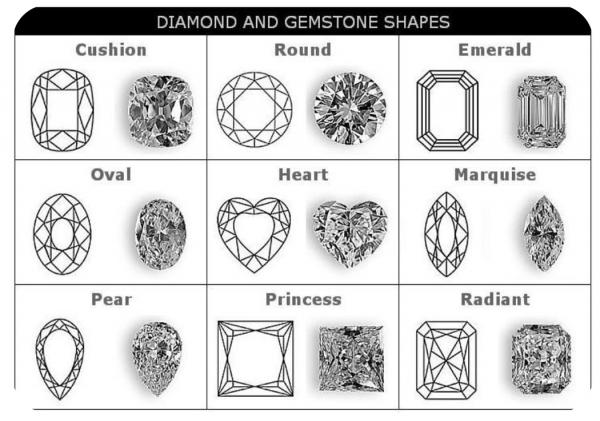
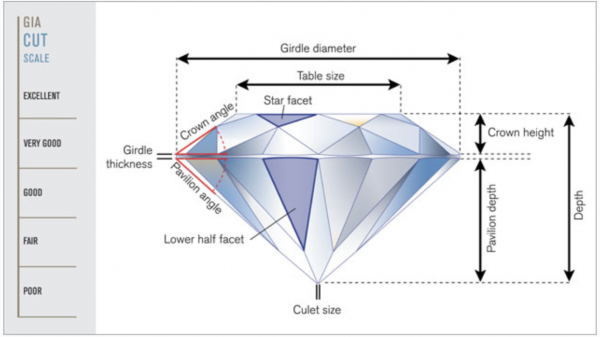
2. COLOUR
Grading White Diamonds
The majority of diamonds that are mined are in a range of pale yellow or brown color that is termed the normal color range. Diamonds that are of intense yellow or brown, or any other color are called fancy color diamonds. Diamonds that are of the very highest purity are totally colorless, and appear a bright white. The degree to which diamonds exhibit body color is one of the four value factors by which diamonds are assessed.Grading the Normal Color Range refers to a grading scale for diamonds in the normal color range used by internationally recognized laboratories (GIA for example). The scale ranges from D which is totally colorless to Z which is a pale yellow or brown color.
Diamonds in the normal color range are graded loose, with the table facet facing downward and pavilion side upwards. When color grading is done in the mounting, other techniques will apply and the grade will usually be expressed as a range (for example F-G) “D” color has a unique “icy” look to it. Diamonds that rate toward the colorless end of the range are sometimes known as “high-color” diamonds, and those toward the other end, “low-color” diamonds. These terms refer to the relative desirability (as demonstrated by market prices) of color grades, not the intensity of the color itself.

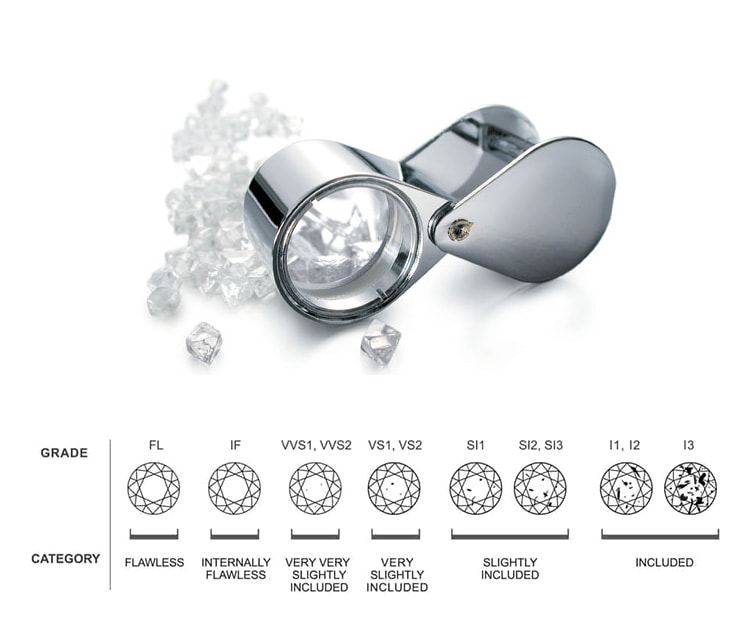
3. CLARITY
Clarity relates to the existence and visual appearance of internal characteristics of a diamond
These are called inclusions, and include surface defects called blemishes. Inclusions may be crystals of a foreign material orstructural imperfections such as tiny cracks that can appear whitish or cloudy.The number, size, color, relative location, orientation, and visibility of inclusions can all affect the relative clarity of a diamond.
A clarity grade is assigned based on the overall appearance of the stone less than 10x magnification.Most inclusions present in gem-quality diamonds do not affect the diamonds’ performance or structural integrity. However, large clouds can affect a diamond’s ability to transmit and scatter light. Large cracks close to or breaking the surface may reduce a diamond’s resistance to fracture.Diamonds with higher clarity grades are more valued, with the exceedingly rare “flawless” graded diamond fetching the highest price. Minor inclusions or blemishes are useful, as they can be used as unique identifying marks analogous to fingerprints. In addition, as synthetic diamond technology improves and distinguishing between natural and synthetic diamonds becomes more difficult, inclusions or blemishes can be used as proof of natural origin.
4. CARAT WEIGHT
The first and easiest of the 7C’S to define, the carat weight of the diamond
The carat weight measures the mass of a diamond. One carat is defined as 200 milligrams. The point unit-equal to one-hundredth of a carat (0.01 carat, OR 2 MG) is commonly used for diamonds less than one carat. All else being equal, the price per carat increases with the carat weight, as larger diamonds are both rarer and more desirable for use as gemstones.
The price per carat does not increase smoothly with increasing size. Instead, there are sharp jumps around milestone carat weights, as demand is much higher for diamonds weighing just more than a milestone than for those weighing just less. As an example, a 0.95 carat diamond may have a significantly lower price per carat than a comparable 1.05 carat diamond, because of differences in demand and due to the rarity of finding gem quality diamonds in larger sizes.
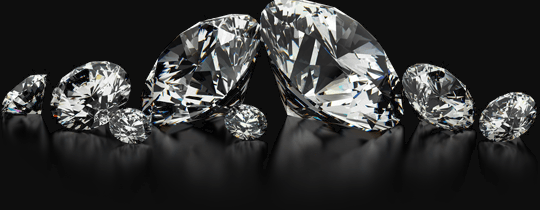

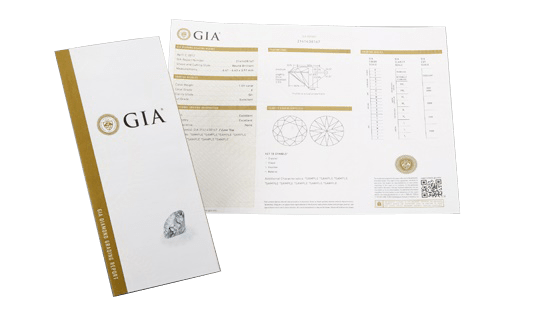
5. CERTIFICATION
Most stones over .50cts come with a certificate
These certificates outline the details of the stones, the 7 C’s and details the technical specifications of the stone.
6. Credibility
You need to be 110% confident in the people you deal with. You can be with us because we genuinely care that you are happy and completely satisfied with your purchase. We love what we do nearly as much as you love each other so be confident with us.
7. Confidence
You need to be 110% confident in the people you deal with. You can be with us because we genuinely care that you are happy and completely satisfied with your purchase. We love what we do nearly as much as you love each other so be confident with us.
Seeing that the experience of choosing one’ s engagement ring is full of so many emotions and feelings as well as completely overwhelming, it is so important that when it comes down to choosing the right one, you as the couple have the utmost confidence in your diamond expert and jeweler. In turn, we, as your jewelers are very confident that we, will assist you in choosing the perfect, magical diamond that will be so beautifully suited.






























